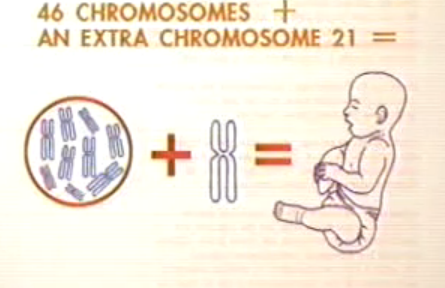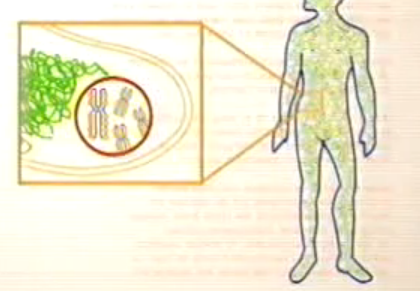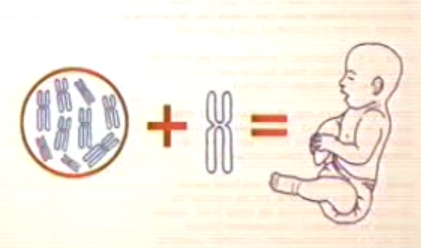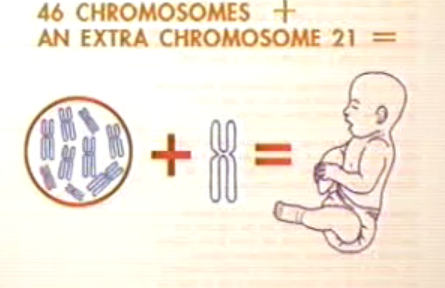Down syndrome is a genetic disorder, caused due to abnormality in the cell division involving chromosome 21. The disorder causes a permanent developmental delay, mental retardation and many other problems. The severities of Down syndrome vary and as such the problems of developmental delays also vary from mild to serious conditions. Learning difficulties are the common disability in Down syndrome.
When one of the three types of abnormal cell division involving chromosome 21 occur, Down syndrome is caused. The extra genetic material from chromosome 21, which is responsible for vital characteristic features of developmental difficulties are caused by all the three cell division abnormalities.
Early intervention and a better understanding of this disorder can help the children and adults affected by this syndrome.
Symptoms of Down syndrome
The following are some of the signs and symptoms of Down syndrome:
- Different and distinct facial features
- A little/tiny head
- Short neck
- Flat face
- Unusually upward slanting eyes that are different from the ethnic features.
- Ears with a peculiar shape
- A protruding tongue
Children with this disorder may also have the following additional signs:
- Short, but broad hands along with a single crease in palm
- Excessive flexibility
- Poor muscle tone
- Comparatively short fingers
Down syndrome affected children suffer from slow growth and are shorter in height. In comparison to other children, the Down syndrome affected children take double the time for growth and achieving developmental milestones such as crawling and sitting. They also elicit moderate mental retardation.
Children born with Down syndrome develop various complications as they grow. They are:
- Leukemia
- Obesity
- Risk of dementia is more prevalent at an age of more than 40 along with higher rate of seizures.
- Risk of infectious diseases due to weak immune system often causing pneumonia.
- Heart disordersthat need surgery
- Sleep apnea
- Other problems like thyroid disorder, early menopause, gastrointestinal blockage, hearing loss, poor vision, skeletal disorder, seizures, and premature aging.
Causes of Down syndrome
Generally, each cell of human being contains 23 pairs of chromosomes. The children get one chromosome of eachpair from their father and as well from their mother. The syndrome occurs when one of the three abnormal cell division connected to chromosome 21occurs. The cell division abnormalities result in additional genetic materialin chromosome 21 which is responsible for thedistinctive characteristics and developmental anomalies associated with the condition
The following are the three genetic variations that cause Down syndrome:
- Mosaic Down syndrome:It is a rare form of syndrome that occurs whenever the children possess some cells with an extra copy of chromosome 21. The combination of normal cells with abnormal cells cause abnormal cell division after fertilization.
- Trisomy 21:An infant with trisomy 21 possess three copies of chromosome 21, instead of two usual copies in all of his/her cells. This anomaly is caused due to abnormal cell division at the time of sperm cell or egg cell development. More than 90% of Down syndrome cases are caused by this trisomy 21.
- Translocation Down syndrome:Whenever a part of the chromosome 21 remains attached to another chromosome (Translocated) at the time of conception or earlier, then it can cause Down syndrome. Children with translocation syndrome have additional material from the attached chromosome 21 in addition to the usual two copies of chromosome 21.The responsible factors for this syndrome are unknown.
Down syndrome is not inherited, but caused due to mistakes in cell division during the developmental stage of sperm or egg, or duringconception;except the translocation Down syndrome which may be passed on to the child from parent. Only 4% of the children are affected by translocation Down syndrome and only just half of them have inherited it from parents. The presence of some rearranged genetic material, even without extra genetic material, can also cause translocation Down syndrome. The chance of passing the translocation syndrome is 3% from father and 10 to 15% from mother.
An increased maternal age also increases the risk to conceiving a child with Down syndrome. The possibility expands along with the age. For example, the risk of conceiving a child with Down syndrome at the age of 35 is 1 in 400; while it is 1 in 35 at the age of 45.
Treatment of Down syndrome
With the medical facility and treatment advancements, the average life expectancy of people with Down syndrome has increased up to 50 years.
Early intervention programs for children with Down syndrome will improve their abilities and their quality of life. The following are some of the treatments for Down syndrome affected children:
- Administering of medicines as per the demands of the condition.
- Early stimulation with appropriate sensory, motor, and other activitiesthat promote self-help.
- Depending on the type of disorder, specialists from various fields will provide the needed treatments.
- Self preparation to face the difficulties that may come while taking care of the affected child.
- Consulting a genetic counselor before conceiving, if you are in the increased risk group
- Seeking help from support groups
Down Syndrome life expectancy
People with Down syndrome have shorter than average life expectancy. However improvements in medical care and ongoing research have made it possible for people to have a longer life span. Back in 1912, the average life expectancy for Down Syndrome was 12 years; now it has increased to 60 years. It has been observed that most people who live up to their 40s and 50s, tend to get affected from neurodegenerative diseases like Alzheimer’s.
Down Syndrome Pictures






